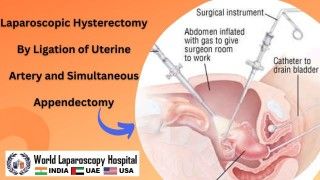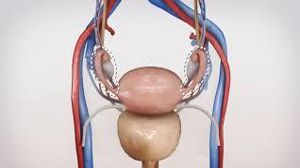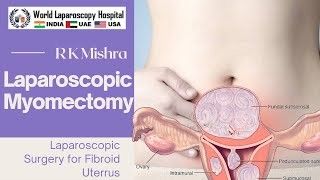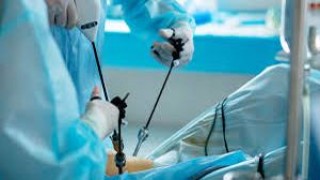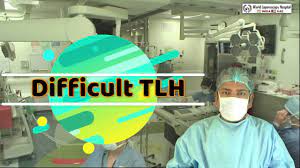Advanced Precision and Rapid Recovery: Laparoscopic Management of Ruptured Ectopic Pregnancy
Add to
Share
1,246 views
Report
2 years ago
Description
In the realm of gynecological emergencies, the laparoscopic management of ruptured ectopic pregnancy stands as a remarkable feat of advanced precision and rapid recovery. Ectopic pregnancy occurs when a fertilized egg implants outside the uterus, typically within the fallopian tubes. In some cases, the ectopic pregnancy may rupture, posing a life-threatening situation for the woman. Traditionally, the treatment of a ruptured ectopic pregnancy involved open abdominal surgery, which often required larger incisions and longer recovery times. However, the advent of laparoscopic techniques has revolutionized the management of this critical condition, offering patients a minimally invasive approach that combines precision with swift recovery. Laparoscopic management of ruptured ectopic pregnancy begins with the administration of anesthesia, ensuring the patient's comfort throughout the procedure. Small incisions, typically ranging from 0.5 to 1 centimeter in length, are made in the abdominal region. Carbon dioxide gas is then gently introduced to create a working space, allowing for the insertion of a laparoscope, a thin, flexible tube equipped with a high-definition camera. The laparoscope provides the surgeon with a magnified, real-time view of the pelvic organs, enabling precise identification and assessment of the ectopic pregnancy. Through additional small incisions, specialized instruments are inserted to facilitate the removal of the ectopic pregnancy and repair any damage caused by the rupture. Using the laparoscope's guidance, the surgeon delicately extracts the ectopic pregnancy while preserving as much healthy tissue as possible. The damaged fallopian tube is either repaired or removed, depending on the extent of the rupture and the woman's reproductive goals. The procedure may also involve controlling any bleeding and ensuring proper hemostasis to promote optimal recovery. The advantages of laparoscopic management for ruptured ectopic pregnancy are numerous. Firstly, the minimally invasive nature of the procedure results in smaller incisions, leading to reduced post-operative pain, decreased scarring, and improved cosmetic outcomes. The smaller incisions also contribute to a shorter hospital stay, enabling patients to return to their daily lives and activities more quickly. The precision offered by the laparoscopic approach plays a pivotal role in achieving successful outcomes. The surgeon's enhanced visualization allows for meticulous removal of the ectopic pregnancy, reducing the risk of leaving any tissue behind. This precise intervention promotes a more thorough resolution of the condition, ensuring the woman's safety and well-being. Rapid recovery is a hallmark of laparoscopic management for ruptured ectopic pregnancy. Patients experience less post-operative pain, require fewer pain medications, and report a faster return to normal activities compared to traditional open surgery. The shorter recovery period allows women to resume their daily routines promptly and embark on the road to physical and emotional healing. It is worth noting that the laparoscopic management of ruptured ectopic pregnancy requires skilled and experienced surgeons proficient in minimally invasive techniques. These specialists possess a deep understanding of the intricate anatomy and the nuances of the procedure, allowing them to navigate challenges and ensure optimal patient outcomes. In conclusion, the laparoscopic management of ruptured ectopic pregnancy represents a significant advancement in gynecological emergency care. This approach combines advanced precision, smaller incisions, reduced pain, and faster recovery times, offering women a safer and more efficient alternative to traditional open surgery. As technology continues to advance and surgical techniques evolve, laparoscopic management will undoubtedly continue to enhance the well-being of women facing this critical condition, providing them with the highest quality of care in their journey toward healing and recovery. Laparoscopic management of ruptured ectopic pregnancy represents a groundbreaking approach in the field of gynecology, offering advanced precision and rapid recovery for women facing this critical condition. Ectopic pregnancy occurs when a fertilized egg implants outside the uterus, most commonly within the fallopian tubes. In cases where the ectopic pregnancy ruptures, prompt intervention is crucial to prevent life-threatening complications. Traditionally, the treatment of ruptured ectopic pregnancy involved open abdominal surgery, which often required larger incisions and extended hospital stays. However, with the advent of laparoscopic techniques, patients now have access to a minimally invasive alternative that revolutionizes the management of this challenging situation. The laparoscopic procedure begins with the administration of anesthesia, ensuring the patient's comfort throughout the surgery. Small incisions, typically ranging from 0.5 to 1 centimeter in length, are made in the abdominal area. Carbon dioxide gas is gently introduced to create a workspace, allowing for the insertion of a laparoscope, a thin tube equipped with a high-resolution camera. The laparoscope provides the surgeon with a magnified view of the pelvic organs, allowing for precise visualization of the ruptured ectopic pregnancy. Through additional small incisions, specialized surgical instruments are inserted to address the condition. The surgeon carefully removes the ectopic pregnancy while preserving as much healthy tissue as possible. Any damage to the fallopian tubes is repaired or, in severe cases, the affected tube may need to be removed. Hemostasis is ensured to control any bleeding and promote optimal healing. The advantages of laparoscopic management for ruptured ectopic pregnancy are significant. The smaller incisions result in reduced post-operative pain, faster recovery, and improved cosmetic outcomes compared to open surgery. Patients experience shorter hospital stays, enabling them to return to their daily activities and normal lives more quickly. The precision offered by the laparoscopic approach is a crucial aspect of successful management. The surgeon's enhanced visualization allows for meticulous removal of the ectopic pregnancy, reducing the risk of leaving any tissue behind. This precise intervention ensures the woman's safety and minimizes the chances of complications. Rapid recovery is a key benefit of laparoscopic management for ruptured ectopic pregnancy. Patients typically experience less post-operative pain, require fewer pain medications, and have a faster return to their normal routines compared to traditional open surgery. This accelerated recovery allows women to regain their physical well-being and emotional equilibrium more swiftly. It is important to note that laparoscopic management of ruptured ectopic pregnancy requires the expertise of skilled surgeons proficient in minimally invasive techniques. These specialists possess a deep understanding of the complex anatomy involved and have honed their skills to perform the procedure with precision and confidence. In conclusion, laparoscopic management of ruptured ectopic pregnancy offers women a transformative approach to this critical condition. With advanced precision, smaller incisions, reduced pain, and faster recovery times, it represents a significant advancement in gynecological care. As technology continues to evolve, laparoscopic management will continue to shape the landscape of emergency gynecological interventions, providing women with safer and more efficient treatment options to ensure their well-being and reproductive health.
Similar Videos

